January itinerary in Japan Day 2 (Yamagata)
(Wednesday, January 26)
Table of contents
1. Move from Oishida Station to Tsuruoka Station
1. Move from Oishida Station to Tsuruoka Station
I left Ginzan Onsen at 10:30 by the shuttle bus from Notoya Ryokan and arrived at Oishida Station at 11:00. At Ginzan Onsen, there was no snow in the passage, but there was deep snow in the mountains.
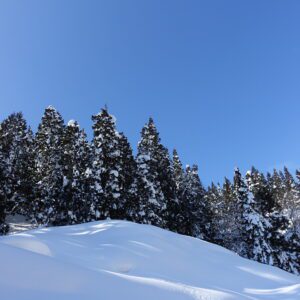
After arriving at Oishida station, I moved to Tsuruoka station. The public transportation I used is as follows.
Depart Oishida Station at 11:11, Yamagata Line “bound for Shinjo”, arrive at Shinjo Station at 11:32
Depart Shinjo Station at 13:10, Rikuu West Line “bound for Amarume”, arrive at Amarume Station at 13:57
Depart Amarume Station at 14:03, Uetsu Line “bound for Atsumi Onsen”, arrive at Tsuruoka Station at 14:19, total fare Yen1,520
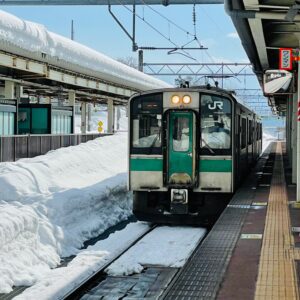
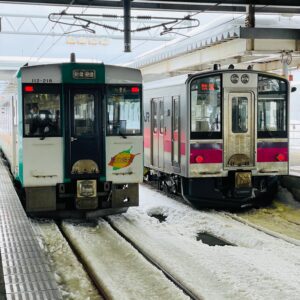

I enjoyed a leisurely trip using all local lines. From the train, I could see the snowy landscape as far as I could see and the Mogami River with snow on both banks, and enjoyed the winter Tohoku railroad trip. The inside of the car was vacant as I imagined.
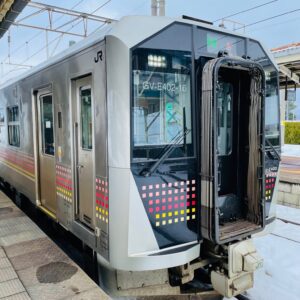
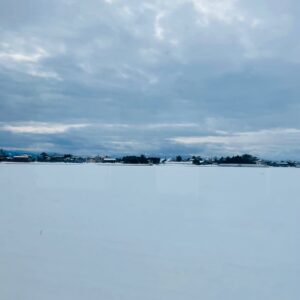
2. Heishindo Merchant House
I arrived in Tsuruoka city and enjoyed sightseeing in Tsuruoka city. Most of the sightseeing spots in Tsuruoka City are concentrated around the Tsurugaoka Castle Ruins. It’s about a 20-minute walk from Tsuruoka station, but this time I moved by bus.
Depart Tsuruoka Station at 13:48, Yunohama Onsen Line [via Zenpoji] “bound for Yunohama Onsen”, arrive at Ginza Dori at 13:52, fare Yen 200
Heishindo Merchant House is a national important cultural property. The Kazama family developed as a merchant of the Shonai domain and became the number one wealthy merchant in Tsuruoka. Heishindo Merchant House was built in 1896 on the site of a samurai residence. Unfortunately, it was closed in winter (December 1st to April 9th), so I couldn’t visit the inside of the house.

3. Tsuruoka Catholic Church
Tsuruoka Catholic Church is a Romanesque church building built in 1903. It is a national important cultural property.
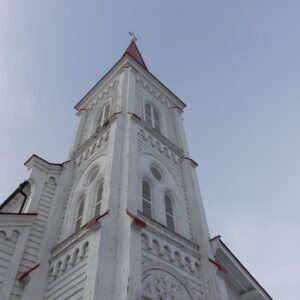
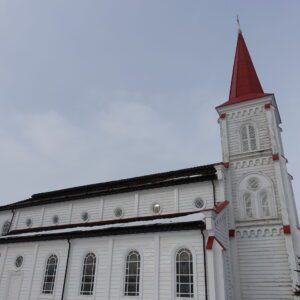
In the Tsuruoka Catholic Church, there is a “Black Virgin Mary Statue” that is unique to Tsuruoka in Japan. The little Christ of the Virgin Mary is also a black statue. I had no prior knowledge, so I was surprised at the black Virgin Mary and Christ statues. The “Black Virgin Mary Statue” was donated by the Delibrand Monastery in Normandy, France, to commemorate the construction of the church.
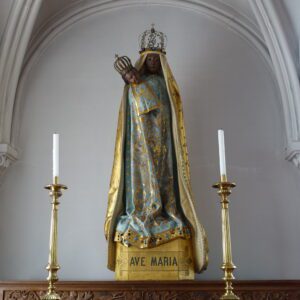
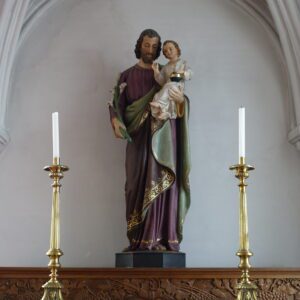

The interior of the Tsuruoka Catholic Church is also wonderful, and I think it is a highly valuable church to visit.
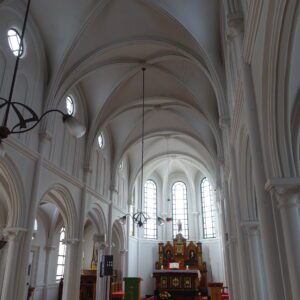

4. Taihokan
Taihokan was built in 1915 to commemorate the throne of Emperor Taisho. It was used as a product display hall at the beginning of the opening and as a municipal library after the war. The contrast between the red dome and the white walls is very beautiful.


5. Shonai Shrine
The Shonai Shrine was built in 1877 by the people of Shonai who yearn for the good politics of the Sakai clan, the lord of the Shonai domain, on the site of Tsurugaoka Castle. This is a sign of the unity of the feudal lords, vassals, and territories of the Shonai domain.
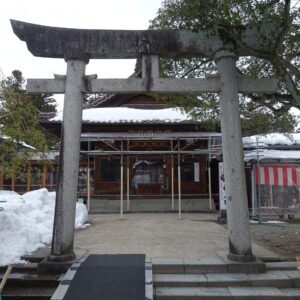
The Shonai clan struggled against the new Meiji government forces during the Boshin War (1868, 1869). The Shonai clan was a strong clan that did not allow the new government forces to invade its own territory until the end. The strength of the Shonai clan is due to the fact that it was equipped with the latest weapons such as Snider-Enfield with the financial power of the wealthy merchant Honma family, and that about 2,000 farmers and townspeople who yearn for the lord Sakai clan volunteered for soldiers. In the Boshin War, Noritsune Sakai (commonly known as Genbu Sakai), who was feared by the new Meiji government army as a famous general of the Shonai domain.
The hanachozu (chozubachi with flowers) at the Shonai Shrine seemed to be maintained every day and was very beautiful.
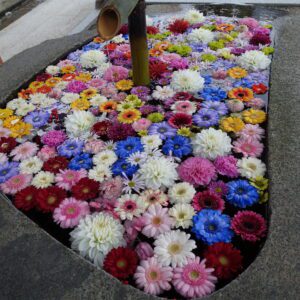
6. Tsuruoka Art Forum
Tsuruoka Art Forum is an art and cultural facility next to the Shonai clan school “Chidokan”. Designed by Akira Ozawa Architectural Planning Office. The Tsuruoka Art Forum has received many awards such as the Architectural Institute of Japan Tohoku Architecture Award, the BCS Prize (Building Industry Association Award), and the Public Building Award for Excellence.
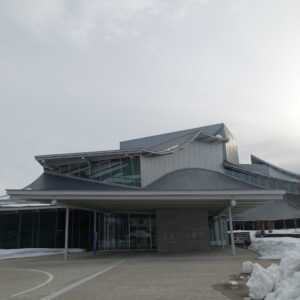
7. Sanno Hie Shrine
Sanno Hie Shrine is said to be the oldest shrine in the Tsuruoka area. A Basho’s poem monument is built in the precincts of Itsukushima Shrine.
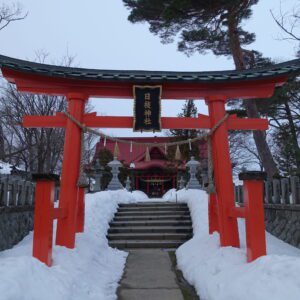
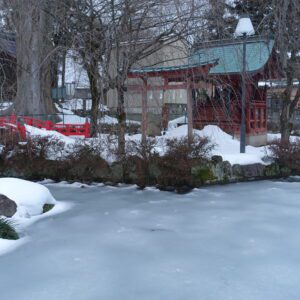
8. SUIDEN TERRASSE HOTEL
The “SUIDEN TERRASSE HOTEL” where I stayed on the 26th and 27th was a beautiful and calm hotel. This hotel is equipped with a library and sake lounge, making it an ideal hotel for long-term stays.
Designed by famous architect Shigeru Ban.

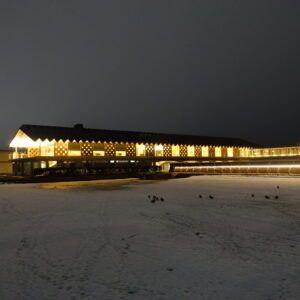

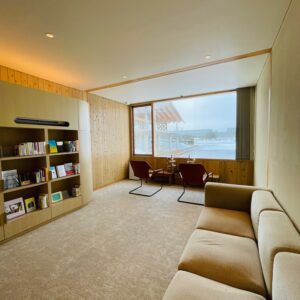
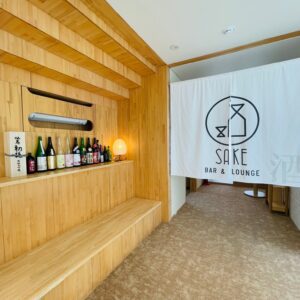
Note: The departure / arrival times, fares, admission fees, meal fees, etc. of transportation listed in the text are as of the time of writing the BLOG. Please check for yourself when you go on a trip as it may change in the future.
